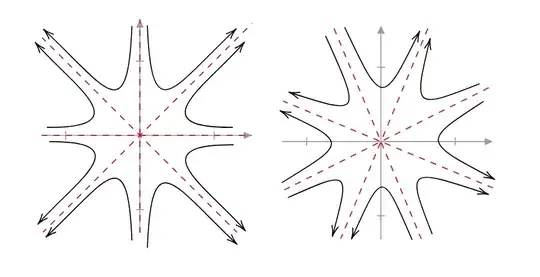Given that split-complex numbers generates 2D coordinates with 4 asymptotes (when multiplying) that look as follows:
The arrows along the hyperbola indicate a positive direction for boosting points along these hyperbola.
Quick explainer: Note that split-complex numbers $\mathbb{D}$ have a $\mathbb{j}$ element such that $\mathbb{j}^2 = 1$. They contrast with the better known complex numbers $\mathbb{C}$ that have an $\mathbb{i}$ element such that $\mathbb{i}^2 = -1$. Thus, you can see that $(x + y\mathbb{j})(a + b\mathbb{j})$ moves a point $(x,y)$ along the hyperbola it lies on if $a + b\mathbb{j}$ is on the special hyperbola passing through the point $1 + 0\mathbb{j}$. In that case $a + b\mathbb{j}$ has a split-complex number magnitude given by $\sqrt{a^2 - b^2} = 1$.
Here's an additional animation to demonstrate boosting along hyperbolas more clearly (python code):

It seems as though there should be an intuitive way to obtain a similar coordinate system with 8 asymptotes instead of 4.
Is there an algebra (or a way to remap split-complex numbers) that would allow one to boost points along these eight hyperbola, or more generally an arbitrary number of hyperbola?


